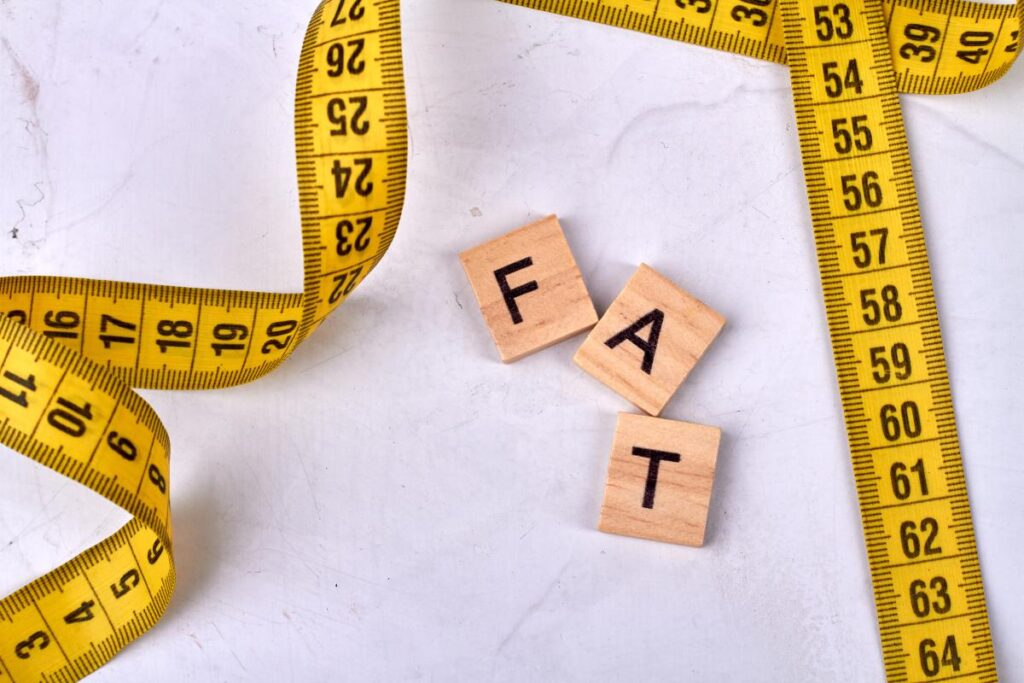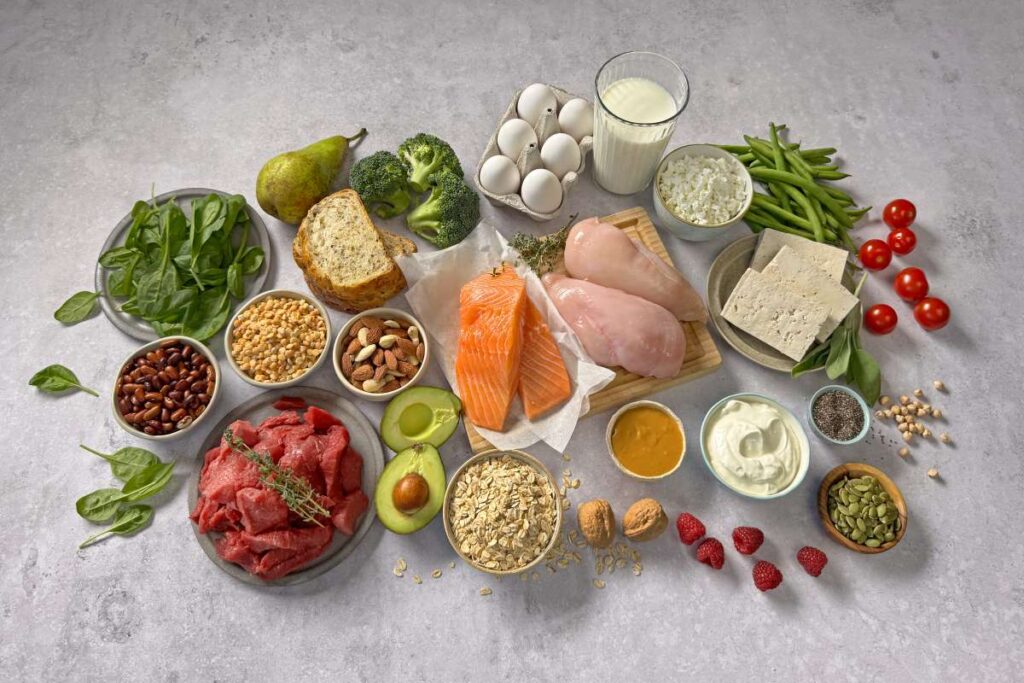Skinny to Muscular
From Skinny Fat to Muscular: The Complete Fix Guide

You’ve been training for months, maybe even years, but when you look in the mirror, you’re neither lean nor muscular. Just soft, flat, and frustrated. That’s the skinny fat trap where you have just enough fat to hide your muscles but not enough muscle to burn the fat. The good news? You’re not broken. You’re just following the wrong map.
This article is that missing map, a complete, science-backed guide to finally move from skinny fat to muscular. You’ll learn why your body stores fat mostly on your belly, how to reset your metabolism, train smarter, eat strategically, and build a strong, balanced physique that lasts. No vague motivation, only proven methods that work, tested in real transformations.
Understanding the Skinny Fat Body
Before jumping into how to go from skinny fat to muscular, it’s crucial to understand what’s actually happening inside your body. Most people try to fix the symptoms like, soft belly, small arms, and stubborn fat, without knowing the real causes. While everybody is unique, the skinny fat pattern follows some common triggers that can be identified and corrected.
In this section, we’ll break down what skinny fat really means, how to recognize it in yourself, and what factors, training, hormones, and daily habits, lead to this condition. By combining practical insights with science-backed explanations, you’ll clearly see the root of the problem before moving toward the solution.
1- What Does ‘Skinny Fat’ Really Mean?

Skinny fat is a term used to describe people who look relatively slim but have a high body fat percentage and low muscle mass, even when their BMI (Body Mass Index) falls within the “healthy” range. In medical terms, this condition is often referred to as “metabolic obesity at normal weight.” That means having a normal BMI doesn’t necessarily mean you’re healthy or free from risk.
Metabolic obesity often brings subtle health concerns, including:
- Higher body fat with minimal muscle tone
- Increased blood pressure
- Blood sugar fluctuations (prediabetes or diabetes)
- Low HDL (“good” cholesterol)
- High triglycerides
- Excess fat stored around the belly
But don’t let these terms scare you, they’re not a verdict, just indicators. As Dr. Heinberg explains, anyone can develop chronic issues regardless of BMI. Even those who appear lean (BMI 18.5–24.9) aren’t automatically safe from metabolic risks. The key is understanding your body composition, not just your weight, and using that awareness to start improving your muscle-to-fat ratio.
2- How to Know If You’re Skinny Fat (Not Just Unfit)
When most of us try to figure out if we’re skinny fat, we usually look in the mirror or step on the scale, but the truth isn’t always that simple. The scale might say your weight is normal, yet your muscle-to-fat ratio could tell a different story. People who fall within a “healthy” weight range can still carry too much fat and too little lean mass, especially around the midsection.
A healthy body-fat range is roughly 10–20% for men and 18–28% for women. Anything beyond this, paired with low muscle tone, usually signals the skinny fat body type. Common signs include:
- Softer appearance and lower muscle definition
- Excess fat around the waist (visceral fat)
- Slower digestion or low energy
- Struggling with strength-based or endurance activities
To know for sure, you can measure your body composition using:
- Calipers: A simple skinfold test that estimates body-fat percentage manually.
- BIA Devices: Smart scales or handheld analyzers that use bio-electrical impedance to estimate fat-to-muscle ratio.
- Clinical Tests (DEXA or MRI): The most accurate, used in labs or fitness centers for detailed body-fat mapping.
Understanding these numbers is key to your transformation, because before going from skinny fat to muscular, you must know exactly what your body is made of
3- Why It Happens: Science Behind It

There isn’t one reason for being skinny fat, it’s usually a mix of habits, hormones, and training mistakes that quietly build up over time. Here’s what science says are the main causes:
- Low activity: Not moving enough reduces metabolism, so your body burns fewer calories and stores more fat.
- Poor diet: Processed foods and low protein intake limit muscle growth while increasing fat gain.
- Stress: High cortisol from chronic stress promotes belly fat, even in lean individuals
- Lack of sleep: Irregular or short sleep disrupts hunger hormones, causing overeating and slower recovery.
- Alcohol & smoking: Both lower testosterone and impair fat metabolism.
- Medical conditions: Insulin resistance or hormonal issues (like thyroid imbalance) worsen fat storage patterns.
In short, skinny fat develops when your lifestyle habits and hormones work against muscle preservation. The fix begins by reversing these patterns through smarter nutrition, structured resistance training, and consistent recovery, the exact approach that helps you speed up your journey from skinny fat to muscular.
Why Skinny Fat Is Harder to Fix Than Being Skinny
Skinny fat, or metabolic obesity, isn’t something that can be fixed overnight. Several physiological and lifestyle factors make it harder to reach your transformation goal from skinny fat to muscular. Unlike being just skinny, where the main challenge is building mass, skinny fat involves burning stubborn fat and building muscle at the same time.
The fat stored around your midsection, especially visceral fat, is the toughest to target and slowest to reduce. Let’s understand why it’s so difficult to fix skinny fat and what makes this transformation unique.
1- Muscle-to-Fat Imbalance and Low Metabolic Output
The skinny-fat body often struggles because of a mismatch between lean mass and fat. When muscle is low, your basal metabolic rate (BMR) , the calories you burn at rest, also drops. That means even slight overeating or inactivity can lead to fat gain, especially in your midsection. Research at PubMed shows that people with lower muscle mass tend to have reduced metabolic flexibility, meaning their bodies are less able to switch between burning fats and carbs efficiently.
Key points of this imbalance:
- Low muscle mass: fewer calories burned
- Reduced metabolic flexibility: energy stored as fat
- Energy surplus: fat gain even from small excess
- Blunted insulin response: nutrients less efficiently used
- Slower recovery / less training capacity
This imbalance traps many in a cycle: weak muscles absorb energy poorly, so fat slowly builds.
2- Low Strength but High Fat Storage

The skinny-fat body hides a strange paradox, looking slim yet feeling weak. This happens because low muscle mass limits how efficiently your body burns energy. When muscles don’t use fuel properly, the body stores it as fat instead.
Key takeaways:
- Low strength → fewer calories burned daily
- Poor glucose use → energy stored as fat
- Weaker hormones → slower muscle recovery
- Quick fatigue → harder to train consistently
This imbalance explains why many people stay “stuck” even when exercising. Up next, let’s uncover why skinny people store most of this fat around their belly, and what it reveals about hormones and lifestyle.
3- Why Skinny People Store Fat Mostly on Their Belly
Even when body weight looks normal, people trying to go from skinny fat to muscular often struggle with stubborn belly fat. This happens because of how hormones, muscle activity, and metabolism decide where your body stores energy.
According to Medical News Today (2024) and study on PubMedia , people with lower muscle mass show reduced metabolic flexibility, the ability to switch between burning fats and carbs, which causes excess fat to settle around the abdomen rather than being used for energy.
Main reasons for belly-dominant fat storage:
- Cortisol dominance → Chronic stress signals the body to store more fat in the abdominal region.
- Insulin resistance → Glucose isn’t efficiently used by muscles, so excess energy becomes belly fat.
- Low core muscle activity → Weak abs and posture reduce calorie burn in the midsection.
- Genetic & enzyme influence → Fat-storage enzymes (LPL) are often more active around the waist.
- Sedentary habits → Long sitting hours decrease circulation and core muscle engagement.
Waist-to-hip ratio (WHR) is a simple indicator: above 0.90 for men or 0.85 for women shows higher visceral fat risk.
In short, the body prioritizes belly fat as the “safest” storage zone when muscle activity is low and reversing it starts by improving muscle engagement and metabolic flexibility through resistance training.
4- How Mindset Mistakes Make It Worse

Going from skinny fat to muscular isn’t just physical, it’s psychological. Many people trap themselves in the same body simply because their mindset works against progress.
Common mindset mistakes that slow transformation:
- Chasing fast results instead of habits
- Comparing progress with others
- Giving up after small setbacks
- Ignoring rest and mental balance
- Overthinking instead of staying consistent
The truth is, your body follows your mind. Transformation starts when discipline replaces emotion and consistency becomes stronger than motivation.
Reset Your Metabolism (Without Starving)
If you’ve read my previous article we talked about High Metabolism, you already know why most skinny guys burn calories faster than they can eat. But when it comes to skinny fat, the goal isn’t to speed metabolism further, it’s to reset it.
In the next few sections, we’ll uncover why crash diets make you look softer, how the body recomposition approach helps you lose fat and gain muscle together, and how to find your true maintenance calories without starving yourself.
Why Crash Diets Make You Look Softer?

A crash diet is a rapid, extreme calorie-restriction plan meant to cause quick weight loss — often at the cost of muscle and long-term metabolism.
Most common crash diets include:
- The Lemon Detox Diet
- The Cabbage Soup Diet
- 800-Calorie Diets (Very Low-Calorie Diets)
- Keto-with-No-Refuel Plans
While they promise fast results, they often leave you with a “soft” look — less muscle, more fatigue, and uneven fat loss.
Here’s why crash diets make you look softer:
- Rapid calorie cuts trigger muscle loss before fat loss.
- The body slows metabolism to conserve energy.
- Glycogen depletion flattens muscles, reducing tone.
- Hormonal stress (cortisol) increases belly fat retention.
When you’re going from skinny fat to muscular, starving your body doesn’t sculpt it, it weakens it. Real transformation comes from recomposition, not restriction.
Recomposition: Burn Fat, Build Muscle
Body recomposition means burning fat and building muscle at the same time, the smart path for anyone going from skinny fat to muscular. Unlike strict bulking or cutting, it keeps your body balanced instead of stressed.
When you eat around your maintenance calories, lift regularly, and get enough protein, your body starts using stored fat for fuel while forming new muscle tissue.
Key rules for recomposition:
- Eat near maintenance calories.
- Prioritize protein (1.6–2.2 g/kg).
- Lift heavy, recover well.
- Sleep 7–8 hours.
- Track strength, not weight.
Research confirms that resistance training plus higher protein intake promotes fat loss and lean muscle gain without extreme dieting (Longland et al., Am J Clin Nutr, 2016).
Next, let’s find your true maintenance calories to keep this process steady and sustainable.
Finding Your True Maintenance Calories

To go from skinny fat to muscular, you first need to know your maintenance calories, the point where you neither gain nor lose weight. Most people in this stage eat too little or too much, slowing progress on both ends.
A quick estimate: multiply your body weight (in kg) by 33–35 to get your daily maintenance range. Track for a week, then adjust slightly up or down. For a full meal breakdown and calorie guide, check out Skinny Guy Bulking Diet
Once you’ve found this balance, you’re ready to train smartly for recomposition and lasting results.
Train for Recomposition, Not Just Growth
Most people trying to go from skinny fat to muscular think more workouts mean faster results, but that’s where they fail. Recomposition isn’t about exhausting your body; it’s about training smart, activating the right muscle fibers, and letting recovery build new tissue. In this section, you’ll learn the key principles of recomposition training, how strength progression beats volume, why compound lifts matter most, and what a balanced 4-day plan actually looks like.
1- What Recomp Training Actually Means?
Recomposition training isn’t about chasing size or burning calories, it’s about re-educating your body to use energy differently. The goal is to rebuild the muscle-to-fat ratio through controlled strength work that tells your body, “keep the muscle, burn the fat.”
Unlike traditional bulking or cutting, recomposition uses moderate volume, progressive resistance, and shorter rest to keep your metabolism active while preserving lean tissue. You’re not simply lifting weights, you’re teaching your body to become metabolically efficient.
In practice, recomposition training focuses on:
- Lifting heavy enough to stimulate muscle retention.
- Maintaining slight calorie balance instead of extremes.
- Combining resistance and mobility for better insulin response.
- Tracking strength gains, not just the mirror.
This is where transformation gets scientific, and where you start training for change, not just through it.
2- Why Progressive Strength Matters More Than Volume

When trying to go from skinny fat to muscular, many people chase volume, endless sets, reps, and hours in the gym. But your body doesn’t grow because of how long you train; it grows because of how effectively you challenge it.
Progressive strength means gradually increasing resistance over time, not just repeating the same 12-rep sets forever. It teaches your body to recruit more motor units, stimulate Type II muscle fibers, and trigger growth even with fewer total sets.
Why progressive overload works better than volume alone:
- Triggers neuromuscular adaptation: muscles learn to contract more efficiently.
- Boosts testosterone and growth-factor response: stronger hormonal signaling.
- Improves metabolic efficiency: your body burns fat while sustaining muscle.
- Prevents fatigue and overtraining: you recover stronger, not slower.
Think of it this way: adding 2 kg to your lifts each week builds far more muscle than adding 20 extra reps. Progression, not punishment, transforms your physique.
3- Compound Movements: The Scientific Angle

Compound (multi-joint) exercises engage multiple muscle groups at once, activating a higher number of Type II (fast-twitch) fibers responsible for growth and strength. According to a study published in Frontiers in Physiology on EMG spectral analysis, compound lifts like squats, pull-ups, and deadlifts produce significantly greater muscle fiber recruitment compared to isolation movements, a key for anyone going from skinny fat to muscular.
When I incorporated these principles into my own transformation journey, I noticed faster improvements in strength, posture, and metabolic response compared to single-muscle workouts.
Why compound movements accelerate recomposition:
- Higher fiber activation → denser muscle tone
- Increased hormonal output → faster recovery
- Improved fat oxidation → better overall metabolism
- Functional coordination → builds real-world strength
Just like I shared in Skinny Guy Bulking Diet, balance and structure matter, and compound training provides both. Up next, we’ll build your 4-day compound-based routine tailored for recomposition.
From Skinny Fat to Muscular: 4-Day Balanced Workout Routine
Building muscle while losing fat requires balance, not burnout. This 4-day Pull–Push–Leg–Core Split works for both tight and flexible schedules, ensuring steady progress from skinny fat to muscular through recovery-focused training.
| Day | Workout Focus | Key Exercises | Sets × Reps | Rest & Intensity |
| Day 1 – Pull (Back + Biceps) | Builds upper-body width and posture | Pull-ups, Barbell Rows, Face Pulls, Dumbbell Curls | 3–4 × 8–12 | 60–90 sec, moderate weight |
| Day 2 – Push (Chest + Shoulders + Triceps) | Increases pushing strength, enhances muscle density | Bench Press, Incline Dumbbell Press, Overhead Press, Tricep Dips | 3–4 × 8–10 | 75–90 sec, focus on form |
| Day 3 – Legs (Glutes + Quads + Hamstrings) | Boosts metabolism and symmetry | Squats, Lunges, Romanian Deadlift, Calf Raises | 3–4 × 10–15 | 90 sec, steady tempo |
| Day 4 – Core + Active Recovery | Enhances stability, burns stored fat | Planks, Hanging Leg Raises, Russian Twists, Light Cardio | 3–4 × 15–20 | 30–45 sec, moderate pace |
Rest Timing and Schedule Variations
| Schedule Type | Strategy | Weekly Flow |
| Tight Schedule (Students/Professionals) | Merge core and cardio into each session (10–15 mins at end) | Mon – Pull / Tue – Push / Thu – Legs / Sat – Full-Body Core |
| Loose Schedule (Flexible Routine) | Keep dedicated recovery day after Legs | Mon – Pull / Tue – Push / Thu – Legs / Fri – Core / Sun – Optional Mobility |
Nutrition That Fuels Body Recomposition
Training sets the foundation, but nutrition decides the outcome. To go from skinny fat to muscular, your diet must support both fat loss and muscle gain at once, a fine balance few get right. In this section, we’ll break down how to eat for muscle gain without adding fat, the exact macronutrient targets for skinny-fat bodies, a 2-phase recomposition plan, and the science-backed supplements that actually make a difference.
How to Eat for Muscle Gain Without Gaining Fat
Most skinny-fat people don’t struggle with eating too little, they struggle with eating wrong. The secret to going from skinny fat to muscular isn’t about eating more; it’s about intelligently feeding your muscles without overfeeding your fat cells.
Focus on foods that support muscle repair, hormonal balance, and metabolic stability, not empty calories. These options work uniquely well for naturally lean people aiming to build lean muscle mass:
Best Food Options for Lean Muscle Gain
- Lean proteins: chicken breast, salmon, eggs, and Greek yogurt, repair muscle fibers and boost satiety.
- Slow-digesting carbs: brown rice, quinoa, and oats, provide stable energy without insulin spikes.
- Healthy fats: avocados, walnuts, and olive oil, improve hormone balance and recovery.
- Micronutrient boosters: spinach, broccoli, and kale, support digestion and nutrient absorption.
- Smart dairy choices: cottage cheese or kefir, casein-rich, slow-digesting proteins that prevent muscle breakdown overnight.
- Liquid calories (with purpose): blend whey protein, banana, and oats, easy on digestion yet calorie-dense for muscle growth.
Avoid ultra-processed foods or sugary “mass gainers” ; they lead to soft, non-functional weight gain, not true muscle.
For a complete calorie plan and meal breakdown, check out the detailed guide here 👉 Skinny Guy Bulking Diet. It expands on portion timing, budget-based meals, and recovery-focused nutrition.
Macronutrient Targets for the Skinny Fat Body

When your goal is to go from skinny fat to muscular, balance is everything. Your macros should fuel training, aid recovery, and prevent fat rebound, not overload your system.
Ideal daily macro ratios:
- Protein: 30–35% of total calories
- Carbohydrates: 40–45% steady-burn carbs
- Fats: 20–25% from healthy sources
- Fiber: 25–30 g for digestion and hormones
- Water: 3–4 L for nutrient transport
Track weekly, not daily, small, consistent improvements beat strict perfection.
2-Phase Plan (Fat Loss To Muscle Growth)
The smartest way to go from skinny fat to muscular is to move through two controlled phases: burn fat first, then build lean muscle. Each stage complements the other and keeps your body balanced.
| Phase | Duration | Goal | Focus Areas | Key Actions |
| Phase 1 – Fat Loss | 6–8 weeks | Reduce stored fat while keeping muscle | Calorie slight deficit (around 10%), high protein, compound training | Prioritize sleep, add light cardio, monitor waist size |
| Phase 2 – Muscle Growth | 8–12 weeks | Build lean tissue, increase strength | Calorie slight surplus (around 10%), consistent strength progression | Track lifts, maintain clean diet, recover deeply |
Supplements That Actually Work (Science-Backed)
Supplements alone won’t build your body, but some can support your journey from skinny fat to muscular, when used correctly. Research shows that creatine monohydrate is one of the most consistently effective supplements for strength, muscle growth, and recovery. (ISSN Position Stand).
Evidence-based supplements to consider:
- Whey protein: supports muscle repair
- Creatine monohydrate: increases strength & mass
- Omega-3 fish oil: lowers inflammation, supports recovery
- Vitamin D3: supports hormonal balance
- Caffeine: boosts workout performance
Use these only as tools real progress comes from food, training, and consistency.
The Psychology Behind Transformation

Transformation doesn’t begin with your workouts, it begins in your mind. I’ve been there: frustrated, broke, doubting if all the effort was worth it. That’s when one quote shifted everything for me:
“Dreams without goals are just dreams, and ultimately they fuel disappointment. On the road to achieving your goals, you must apply discipline, but more importantly, consistency. Without commitment, you’ll never start; without consistency, you’ll never finish.
Your mindset has to become unbreakable. As Vision Personal Training explains in their article on The Psychology Behind the Transformation, real change isn’t about motivation, it’s about shifting identity, discipline, and clarity of purpose.
1- Why Patience Beats Perfection
In my first months, I wanted quick results, I compared myself to others, got frustrated, and almost quit. Then I understood that perfection kills consistency. Patience is what lets your body catch up with your effort. Progress may be invisible this week but obviously next month, stay patient long enough to see it.
2- Breaking the “All or Nothing” Mentality
You don’t have to be perfect to grow; you just have to be present. Missing a workout or eating off-plan isn’t failure, staying off track afterward is. Every setback is a reminder to return stronger. Transformation happens when effort becomes identity, not when every day is flawless.
3- Tracking Small Wins (Body Fat %, Photos, Mood)
One trick that saved my motivation was tracking more than numbers. I logged how I felt, how I slept, and how my body looked weekly. I even took pictures when I looked at my worst, messy beard, no gains, because comparing them later reminded me how far I’d come.
Small wins,better focus, deeper sleep, one more rep, proved I was moving forward. Transformation is rarely loud; it’s built quietly through small, consistent victories.
FAQs: From Skinny Fat to Muscular

1 ️- How long does it take to go from skinny fat to muscular?
On average, 6–12 months of consistent training, nutrition, and recovery can reshape your body from skinny fat to muscular.
2️- Should I bulk or cut first if I’m skinny fat?
Start with a slight calorie deficit and strength training, focus on body recomposition before a full bulk or cut.
3️- Can I build muscle while losing fat?
Yes, through recomposition: eating near maintenance calories with high protein and resistance training.
4️- What’s the best workout split for skinny fat guys?
A 4-day Pull–Push–Leg–Core split builds strength evenly while keeping fat gain minimal.
5️- Why do skinny people store fat mostly on their belly?
Due to hormonal sensitivity and lower muscle mass, fat tends to concentrate in the abdominal area.
6️- Which foods should I eat to fix skinny fat body composition?
Prioritize lean proteins, complex carbs, and healthy fats; avoid sugar spikes and ultra-processed foods.
7️- Why do crash diets make me look softer, not leaner?
Because extreme calorie cuts burn muscle, slow metabolism, and increase fat retention.
8 ️- How can mindset affect my body transformation?
Transformation begins in your mind, consistency and discipline matter more than motivation.
Case Studies – Real Transformations That Took Time
Case 1 – 8-Month Recomp Success
- A beginner followed a 4-day Pull–Push–Leg–Core routine with a slight calorie surplus and protein tracking.
- Over 8 months, body fat dropped from 20 % → 14 %, muscle mass increased ~4 kg, proving consistency beats quick fixes.
Case 2 – My Own Journey (From Skinny to Strong)

- I started at 63 kg with a lean frame and low confidence; through disciplined training, mindful nutrition, and mental resilience, I built lasting strength and balance.
- My story reflects the same principles shared on Gym With Mind’s About Us page, real transformation takes patience, mindset, and sustainable habits.
AI in Fitness: Modern Recomp Tracking Tools
AI Macro & Progress Trackers
- Carbon Diet Coach – adapts calorie targets automatically for recomposition.
- MacroFactor – AI-based nutrition tracking that learns your metabolism.
- Fitbod – builds personalized training plans based on recovery data.
AI Workout Assistants
- Strongr Fastr – meal + workout generator tuned for body recomposition.
- Hevy AI – tracks lifts and suggests progressive overload updates.
Why I Use AI in My SEO and Fitness Journey
I use AI to optimize both content growth and body transformation. Tools like ChatGPT for SEO analysis and Carbon Coach for nutrition teach me one thing: data plus discipline equals results.
Quick Fix Summary: From Skinny Fat to Muscular
The fastest way to go from skinny fat to muscular:
Train 4 days per week with progressive overload,
eat at maintenance calories with high protein,
and stay consistent for 6–8 months to achieve full body recomposition.
In short: build muscle, lose fat, and transform, steadily, not instantly.
Conclusion:
Going from skinny fat to muscular isn’t a quick challenge, it’s a transformation of mindset, habits, and patience. The body you want is built day by day through smart training, balanced nutrition, and a disciplined lifestyle that keeps you consistent long after motivation fades. Each workout, meal, and recovery day counts as a small victory toward long-term strength and confidence.
Real transformation starts when knowledge turns into action. You now have the complete roadmap, from metabolism reset to mental resilience. For deeper guidance, explore our Skinny Guy Bulking Diet for calorie and meal insights, and revisit Skinny to Muscular Transformation to relive the full journey. Begin today, lift with purpose, eat with awareness, and trust the process. Your future self will thank you for never giving up on the person you decided to become.

Ahmad Hassan is a fitness writer and transformation coach behind GymWithMind.com, specializing in the Skinny to Muscular Transformation niche. After going from 51 kg to 65 kg naturally, he now shares science-backed, practical strategies to help skinny guys build lean muscle through smart training, balanced nutrition, and consistency. His guides blend real experience with research to make fitness simple, achievable, and sustainable

 Skinny to Muscular1 year ago
Skinny to Muscular1 year agoDiscover Elite Body Sculpting: Best 8 Method Revealed For Precision Shaping:

 Skinny to Muscular1 year ago
Skinny to Muscular1 year agoRealistic 6 Month Body Transformation Female: From Struggle To Power

 Skinny to Muscular1 year ago
Skinny to Muscular1 year agoBody Fitness Tips For Female; Unleashing Fitness Secrets

 Skinny to Muscular2 years ago
Skinny to Muscular2 years agoHow To Lose 50 Pounds in 5 Months: Is it possible ?

 Skinny to Muscular1 year ago
Skinny to Muscular1 year ago9 Best Front Squat Alternative At Home And Gym:

 Skinny to Muscular1 year ago
Skinny to Muscular1 year agoTop 12 Books For Strength Coaches:

 Skinny to Muscular2 years ago
Skinny to Muscular2 years agoKettlebell Golf Workout;- Get Ready For Swing

 Skinny to Muscular1 year ago
Skinny to Muscular1 year ago15 Best Strength And Conditioning Books
